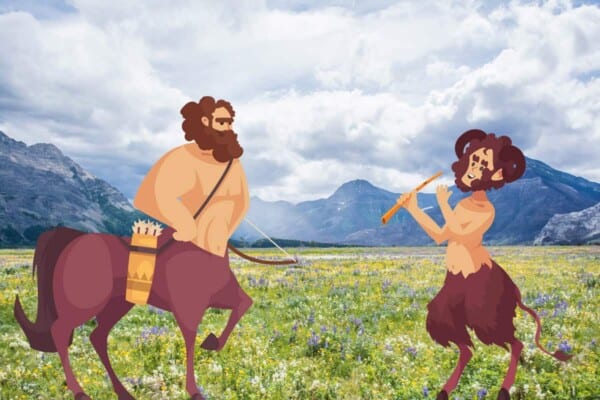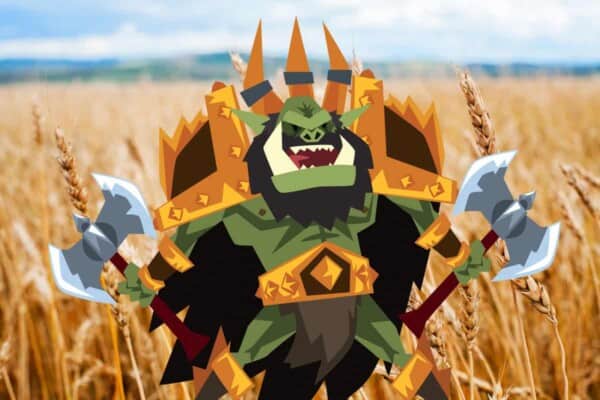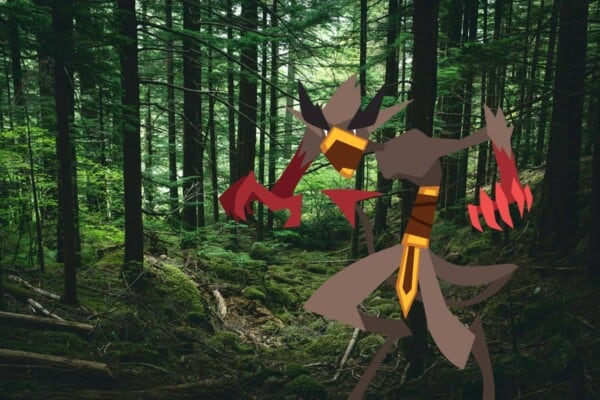In Ancient Greek mythology, Cerberus was a three-headed dog who guarded the Underworld and was a friend, companion, or pet of Hades, God of the Dead. He was known to be fierce but not evil, solemnly tied to his duty. Since antiquity to the modern day, Cerberus and other similar three-headed dogs have been very popular in art, literature, and later movies and television shows. His loyalty to Hades and Hades’s wife Persephone, and his guardianship of the dead, has spawned many different stories.
Here are some fascinating facts that you might not have known about Cerberus!
A Few Fascinating Facts about the Three-Headed Dog Cerberus
1. Cerberus’s name could have meant many things
The etymology is uncertain. Some link it to the Greek word creoboros, meaning “flesh-eater”. Others, however, have a decidedly more friendly etymology. Along with the Sanskrit sarvarā, another legendary hound, Kerberos (Cerberus) may have originated from the Proto-Indo-European word k̑érberos – meaning “spotted” – as in, Spot the dog!
2. Though he was usually three-headed, this wasn’t always the case
In some stories, he had many more heads. His tail was usually that of a serpent, and other serpents were often depicted as growing from his body.
3. Cerberus was brother to many famous Greek monsters
His father was Typhon, the serpent-giant, and his mother Echidna, the half-woman half-snake Mother of Monsters. Cerberus’s siblings included:
- Orthus, the two-headed guard dog of the herds of the monstrous Geryon
- The Lernean Hydra, the many-headed creature who was a foe of Heracles
- Chimera, the fire-breathing hybrid monster slain by Bellerophon
- The (Greek) Sphinx, a lion with a woman’s face and eagle’s wings who spoke deadly riddles, famous from the story of Oedipus
- The Nemean Lion, a fearsome near-unkillable creature and foe of Heracles
- The Caucasian Eagle, the torturer of Prometheus
- Ladon, the dragon who guarded the golden apples of the Hespirides
- The Crommyonian Sow, a deadly pig and a foe of Theseus
- Gorgon, the mother of Medusa and her gorgon sisters
- The Colchian Dragon, guardian of the Golden Fleece and foe of Jason
4. Various writers gave Cerberus other sets of three rather than or in addition to his heads
Euripides said Cerberus had three bodies as well as heads. Virgil gave him three or more backs. Horace gave him three tongues.
5. One of Heracles’s Twelve Labors for the King of Tiryns was to capture and bring back Cerberus
This task was the last labor and given because it was impossible. With the help of Hermes in his aspect as a psychopomp (underworld guide) and Athena, patron of heroes, Heracles descended into the Underworld. Heracles either fought the dog (or Hades) as a test or was given Cerberus by Persephone, the Queen of the Underworld and Heracles’s sister through their father, Zeus. Some other versions have him using the souls of dead heroes to help convince Hades of his worthiness.
He was allowed to leave the Underworld with Cerberus under one condition – that the dog be returned to his master without ever being harmed.
6. Cerberus was not comfortable on the surface
In most tales, he reacted badly to the sun, temporarily blinded, and needed to be dragged into the world of man by Heracles and sometimes also Theseus. He also vomited poison, creating fields of aconite.
7. After presenting Cerberus, Heracles kept his word to Hades
He either returned him to the Underworld directly or released him from his chains, at which point Cerberus ran like the wind to return to the side of his master.
8. The Greek historian Philochorus tried to write a “rationalized” version of the Cerberus myth, as if it happened to humans
In this version, Hades (under his epithet Aidoneus) was king of the Molossians, married to a woman named Persephone. They had a daughter named Kore (usually an epithet of Persephone) and a fierce normal dog, Cerberus. Many men courted Kore, but they were required to fight the dog to win her hand, and none ever were victorious. Theseus and his friend Pirithous came to kidnap Kore, but when Aidoneus caught them, he fed Pirithous to Cerberus. Later, Heracles came and rescued Theseus.
9. The 15th century Vatican Mythographers made Cerberus an allegory
For them, the dogs three heads represented the three kinds of hatred that humans can experience: natural hatred, causal hatred (hatred for a reason), and casual hatred (accidental hatred).
They also associated Cerberuses three heads with other threes in Greek mythology: the three brothers (Hades, Zeus, and Poseidon) and their three-pronged weapons (spear, thunderbolt, and trident).
Another interpretation from the same source describe Cerberus’s three heads as an allegory for the three known continents (Africa, Europe, and Asia), because all three necks led to Tartarus and the Underworld where souls went to die.
10. Cerberus is one of many so-called Hellhounds across many mythologies
Some of his most famous analogous hellhounds are:
- The German Walpurgisnacht hound, a form of the devil
- The Norse and Germanic Garmr, companion of Hel and guardian of her realm in the Underworld
- The Welsh Cŵn Annwn, the ghostly hounds of Annwn, the Otherworld
- The Central American El Cadejo, one white protector and one black malevolent creature that causes bad choices.
- The mounts of the Asian jinn, who rode around graveyards and ate corpses
- The Indian Mahākanha, a black hound who guided the morally poor toward goodness to prevent them from being reborn in hell
- The English Black Dog, an omen of death
11. There is a constellation named after Cerberus
It was named in 1687 and emphasizes the snake-like aspects of Cerberus. It shows him with three snake heads held by Heracles.
12. A genus of snakes is also named for Cerberus
These Asian snakes are known as ‘dog-faced water snakes’!
Final Thoughts
People love dogs, and so people love Cerberus! Loyal to a fault but fierce when he needed to be, this three-headed guard dog was the perfect representation of how nobody escaped the Underworld without Hades’s express permission. After all, the dead were the dead – most of the time!
Contents
- A Few Fascinating Facts about the Three-Headed Dog Cerberus
- 1. Cerberus’s name could have meant many things
- 2. Though he was usually three-headed, this wasn’t always the case
- 3. Cerberus was brother to many famous Greek monsters
- 4. Various writers gave Cerberus other sets of three rather than or in addition to his heads
- 5. One of Heracles’s Twelve Labors for the King of Tiryns was to capture and bring back Cerberus
- 6. Cerberus was not comfortable on the surface
- 7. After presenting Cerberus, Heracles kept his word to Hades
- 8. The Greek historian Philochorus tried to write a “rationalized” version of the Cerberus myth, as if it happened to humans
- 9. The 15th century Vatican Mythographers made Cerberus an allegory
- 10. Cerberus is one of many so-called Hellhounds across many mythologies
- 11. There is a constellation named after Cerberus
- 12. A genus of snakes is also named for Cerberus
- Final Thoughts













